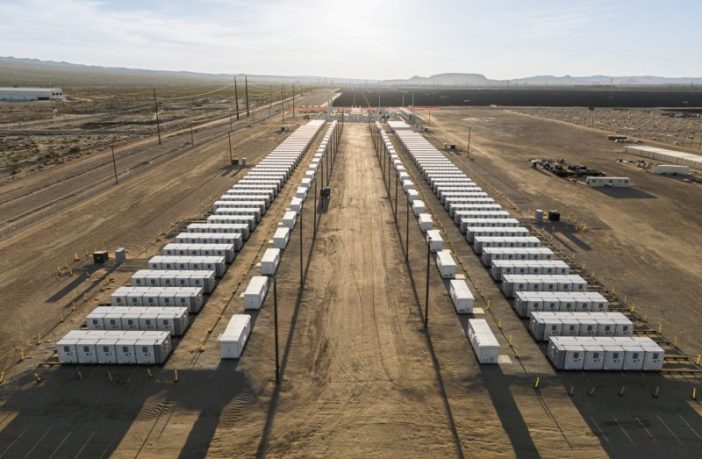We can’t decarbonize the energy grid without the support of energy storage. Grid-scale energy storage projects complement renewables by storing energy and dispatching it during periods of low wind or sunlight, creating a more resilient energy system.
Although very rare, recent fires at energy storage facilities are prompting manufacturers and project developers to ask serious questions about how to design safer projects.
So, what are manufacturers and project developers doing to ensure their projects are safe?
Engineers are hard at work developing next-generation hardware in their R&D labs. Fire safety experts are designing extreme testing regimens to put batteries through their paces. And project managers are writing plans. But not just any plans — these are the core design documents that chart every safety consideration, answer stakeholders’ questions and de-risk energy storage projects.
While these documents are not universally required by states or local governments, leading manufacturers and project developers should go above and beyond minimum requirements by developing four core documents for every storage project they deploy. Fires at energy storage facilities are rare events, but the industry must have four distinct plans in place for dealing with them.
“The big one”: hazard mitigation analysis
The Hazard Mitigation Analysis (HMA) is “the big one” – a key document that evaluates how the energy storage system operates, what safety and mitigation features it has, how these might fail and what the consequences would be. Its scope is the boundaries of the project site.
Project teams should develop their HMA as early as possible during project development to give the fire service, the local community and the Authority-Having Jurisdiction (AHJs) – local regulators responsible for enforcing the safety codes – a headstart in getting comfortable with battery technology and the proposed project.
The HMA comprehensively answers a handful of basic questions about what testing has been completed, where and how the battery will be installed (indoors or outdoors), what risks the project poses, what preventative approaches are being applied and how the project team will work with stakeholders.
HMAs are code-driven documents. This means they must be prepared in accordance with local codes and requirements, which can be adopted versions of the International Fire Code (IFC), National Fire Protection Association (NFPA) requirements, relevant state Fire Codes, or a combination of all of these.
It’s best practice for project teams to have a “framework” HMA which contains the key information about their storage product. From here, the HMA framework will be tailored to the specific project based on location, siting, proximity to the surrounding community and other important factors.
Although HMAs are only required in about two thirds of US states, leading manufacturers and project developers proactively provide an HMA to key stakeholders to begin the safety conversation early, build trust and ensure the project is as safe as possible.
Getting some perspective: community risk analysis
While HMAs assess safety risks within the boundaries of the battery project, Community Risk Analyses (CRAs) focus on potential impact of a fire on the community, both inside and outside the project site. They provide crucial education for stakeholders and the local community about what the project is, the level of safety risk associated with the project and how they may be impacted in the highly unlikely event of a fire.
Community awareness of battery storage is increasing as media coverage of battery fires increases, which means the public is seeking more information about the technology during the planning stages of projects. A CRA is a critical component of good community engagement, helping to ensure nobody is taken by surprise by a project and avoiding an information vacuum in which misinformation can spread.
Sharing the critical information: emergency response plan
The Emergency Response Plan (ERP) is another critical document that provides an overview of the facility along with an explanation of the equipment it contains. The plan outlines failure scenarios, detection capabilities, system safety features, hazards and response tactics associated with battery storage emergencies or the failure of supporting electrical components.
This information is vital to first responders and AHJs who will typically be the first ones on the scene. In addition to the ERP, training and drills should be conducted with the manufacturer alongside the first responders to ensure everyone is on the same page.
Planning For success: site design guide
Even if the probability of a fire at a storage facility is very low, there must be a plan in place for dealing with one. In the same way that sprinklers are regularly installed in commercial buildings, HMAs and CRAs are both focused on dealing with the very unlikely event of a safety issue.
The Site Design Guide (SDG), on the other hand, outlines what can be put in place to make sure safety events don’t happen in the first place. This document provides a high-level outline of fire protection requirements and best practices using active systems, passive systems and procedural safeguards, and references requirements set by the key codes and standards. For instance, the document should provide high-level information about the detection and alarm systems including the location of the master Fire Alarm Control Panel (FACP).
All manufacturers should make the SDG available to the developer, owner-operator and first responders from the beginning of the project. This is a crucial framework for conversations with first responders about site access, equipment available on site, the fire command center and other information that would be critical for them to access if a fire were to occur.
If you’re failing to plan, you’re planning to fail
Although these plans are not always required by code, AHJs, emergency responders and the public still deserve to have access to the information that they contain. Industry leaders prepare these documents as early as possible in the project and use them as the framework for transparent conversations with stakeholders about safety.
The information contained in a project’s plans is crucial to create a holistic approach to fire safety in battery energy storage by proactively establishing what could go wrong and what can be done to fix it.
Authors: Noah Ryder, Managing Partner, Fire and Risk Alliance and Mishaal Syed Naveed, Fire Protection Engineer, Wärtsilä ES&O.

















